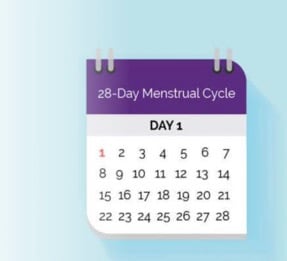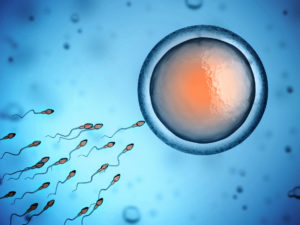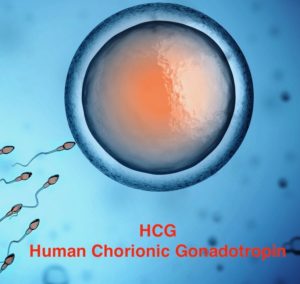If you want to learn how you can increase chances of getting pregnant then you should have a good understanding your menstrual cycle and the problems that can prevent pregnancy.
Most people have a very limited understanding of their menstrual cycle… and some people have no clue at all. For many, all they understand about their menstrual cycle is each month they have bleeding between their legs.
As long as they have period they are okay… but the moment they skip a period they get worried! Younger women fear being pregnant. Older women fear pregnancy first and having cancer second.
The menstrual cycle seems complex but the reality is your menstrual cycle can easily be explained and easily understood.
Understanding your menstrual cycle is very important if you want to understand:
- Follicle Stimulating Hormone (FSH) testing (menopause testing)
- LH hormone testing (ovulation testing)
- Pregnancy tests
- Progesterone testing (early pregnancy loss)
- Progesterone treatment for miscarriage (treatment for early pregnancy loss)
So to increase chances of getting pregnant, you should learn about your menstrual cycle.
This will be the best article you will EVER read about understanding your menstrual cycle. Why?
- This article is written by a real fertility doctor and not a non-medical author hired by a website to write general information.
- The article is written by a doctor who has a great gift for simplifying complex topics.
- The article is written by a doctor who can easily make the connection between complex medical topics and the relevance of these topics to your everyday life.
This is the first in a series of articles to help better explain your menstrual cycle and help you increase your chance of pregnancy. If you are reading this article for the first time then you should save a bookmark for this page or check back with our Tubal Reversal Blog periodically to see the additional articles that are published.
The additional articles will explain FSH testing, ovulation testing, pregnancy testing, AMH test, and progesterone to prevent pregnancy loss.
Forget the freaking calendar!
Your menstrual cycle is about 4 weeks long. It is purely coincidental your menstrual cycle is about the same length as a month. Your menstrual cycle and the monthly, lunar calendar having absolutely NOTHING to do with each other.
 It just so happens you have a period about once a month…but during a short month, ie February….you may not have a period….and during a long month ie January…you could have two periods (or at least a portion of a period and the start of another period).
It just so happens you have a period about once a month…but during a short month, ie February….you may not have a period….and during a long month ie January…you could have two periods (or at least a portion of a period and the start of another period).
So the first thing you need to do is throw away your belief your menstrual cycle is influenced by the orbit of the moon around the earth or the amount of time it takes for the earth to go around the sun!
The average menstrual cycle is 28 days….on average 7 days of bleeding (shedding the lining) and 21 days of no bleeding in-between your days of bleeding.
Ovary, tubes, uterus: Different organs, different functions
Many people conceptualize their ovaries, fallopian tubes, and uterus as all just one big thing!
To be sure, all the parts are in the same area and all the parts are interconnected together in some fashion but it is better if you think of them as different organs that all play different roles.
Ovary. The ovary is an organ that produces hormones and releases eggs. The eggs travel in the fallopian tube. The hormones are absorbed and circulate by the blood stream.
Fallopian tube. The fallopian tube allows sperm to get to the egg. Fertilization happens in the end of the fallopian tube (in the fimbrial end) and the fallopian tube then helps transport the fertilized egg to the uterine cavity.
Uterus. The uterus is a fertility organ that is a large muscle that supports the uterine lining. The uterine lining supports the early fertilized egg. Both the uterine muscle and uterine lining provide blood supply to the growing baby. The uterine muscle helps expel the baby when you go into labor.
Hormones Not Bad. Hormones Good!
When most women say or hear the word ‘hormones’ it is usually interpreted in a negative sense; “My hormones are out of whack”, “I am hormonal today”, “Forgive me…its my hormones”, etc.
Hormones are not bad. Hormones are good. Hormones are our body’s signaling system. This is how various parts of the body coordinate what is going on.
The brain provides instruction to the body by sending electrical signals through nerves (our nervous system) or by sending chemical signals through the blood stream (our hormonal system).
Saying hormones are bad is like saying radio signals, WiFi, and emails are bad. Obvious this is nonsense.
Hormones are how the body controls and coordinates various distant organs and their daily functions.
How to increase your chances of getting pregnant: Understanding Your Menstrual Cycle
Although the menstrual cycle is complex, the menstrual cycle can be best explained by understanding there are three different players:
- Your brain (Big Boss)
- You ovaries (Middle Management)
- Your uterus (The Worker)
Your brain tells the ovaries what to do. Your ovaries tell the uterus what to do. Your uterus does not tell anybody what to do and also has to do all of the work! Your uterus has to suffer through your monthly periods and also gets to carry each baby for up to 9 months!
All three organs work together with the goal getting a fertilized egg safely tucked away into the uterus.
First 2 weeks: Your brain is the Big Boss!
Most people are not aware of this but your menstrual cycle actually starts with your brain…more specifically your pituitary gland!
 The pituitary gland is located at the base of your brain. The pituitary gland is known as the master of all glands…because the pituitary is in charge of releasing many different starter hormones that control several different hormone organs (thyroid, adrenals, ovaries, etc).
The pituitary gland is located at the base of your brain. The pituitary gland is known as the master of all glands…because the pituitary is in charge of releasing many different starter hormones that control several different hormone organs (thyroid, adrenals, ovaries, etc).
The menstrual cycle is started by your pituitary gland.
The first two weeks your pituitary tells to the ovaries what to do. Your pituitary releases Follicle Simulating Hormone (FSH).
The FSH is released into the blood stream by the pituitary and circulates around your body. The ovary detects the FSH hormone in the blood stream. The FSH tells the ovary to start producing a follicle (an early egg).
So your pituitary talks to the ovary with FSH hormone released into your blood stream…your pituitary gland is telling the ovaries to get ready to release an egg.
After detecting FSH in the blood stream the ovary begins to form an egg (an early egg is known as a follicle).
 Not only does FSH tell the ovary to start reading an egg for release….but it also tells the ovary to make the hormone estrogen.
Not only does FSH tell the ovary to start reading an egg for release….but it also tells the ovary to make the hormone estrogen.
Estrogen is released into the blood stream (no…estrogen does not travel down the fallopian tube).
The estrogen is secreted into the blood stream, circulates around the body, and is eventually detected by the uterine lining. The estrogen tells the uterine lining to start growing to get ready for a possible fertilized egg (pregnancy).
So the ovary talks to the uterine lining with estrogen… the ovaries tell the uterine lining to get ready for a possible fertilized egg.
After 14 days…the follicle has matured and is ready to be release the egg. The uterus has grown the uterine lining and is almost ready for a fertilized egg. All they are now waiting for is the pituitary to scream “Go!”
More information: Pregnancy and FSH Levels: Understanding A Crappy Fertility Test
14th day: Big Boss Brain screams “Ovulate!”

FSH and LH increase just before ovulation
At the end of two weeks your pituitary can sense that it is time to get started. Your pituitary will release a large amount of luteinizing hormone hormone (LH). This is often called the LH surge.
The surge in LH is secreted into your blood stream. The ovary can detect this increase in LH.
Your pituitary secrets a massive surge in LH. This surge in hormones tells one of the ovaries to release the egg!
When the ovary detects the surge in LH hormone…the mature egg (follicle) is released and the egg is launched into the fallopian tube:
- If sperm are waiting in the fallopian tube then fertilization may happen.
- If no sperm are waiting in the fallopian tube…then the egg will die if it is not fertilized within 24 hours.
LH is important because it helps trigger the release of the egg. LH is what is being tested for when you test your urine with ovulation predictor test kits. If LH is not released…then guess what? You brain did not release LH hormone that month and you won’t release an egg and you won’t have a period.
More information: LH Surge Testing After Tubal Reversal: A Fertility Surgeon’s Advice
Second 2 weeks: Your ovary is the Boss!
After the egg is released from the follicle, the follicle turns into a corpus luteum cyst. People hear the word ‘cyst’ and freak out.
Here is a little secret: ovarian cysts are normal (at least small ones are normal)!
A cysts is a fluid filled sac. A cyst is very similar to a blister. Think of a corpus luteum cyst as a small ovarian blister.
After the the egg is released, the area where the egg is released from turns into a small blister on the surface of the ovary. This blister is a cyst…but it is an important cyst. This cysts is called a corpus luteum cyst.
 The purpose of the corpus luteum cyst is to produce the hormone progesterone.
The purpose of the corpus luteum cyst is to produce the hormone progesterone.
Progesterone is released into the blood stream after ovulation… not the fallopian tube.
Progesterone is the hormone responsible for many of the premenstrual symptoms women experience. This is the hormone that makes you feel bloated and, sometimes, irritable.
Progesterone travels through the blood stream to the uterine lining and causes the lining to thicken and get ready to accept a fertilized egg.
Your Uterus Is The Worker!
The uterus really gets no say in the menstrual cycle. Your brain is the Big Boss and your ovary is Middle Management. The uterus gets bossed around by the ovary.
The first two weeks the uterus responds to the ovary throwing estrogen at it… the estrogen provides the instruction for the uterine lining to grow.
The second two weeks the uterus responds to the ovary throwing progesterone at it…the progesterone tells the uterine lining to get soft, get comfortable, and get ready for the fertilized egg.
When progesterone levels decrease the uterine lining releases and you have your period. If progesterone levels persistently increase because of pregnancy the uterine lining continues to stay thick and plush to support a pregnancy.
No fertilization, No Pregnancy: Cycle starts all over again!
Most people think you can get pregnant at anytime in the menstrual cycle….or at least during most of it.
 The reality is you can only become pregnant for only about 24 hours during the entire menstrual cycle!
The reality is you can only become pregnant for only about 24 hours during the entire menstrual cycle!
The egg has an internal clock. If the egg does not get fertilized within 24 hours of ovulation it dies. It is a single cell and it gets absorbed by the body.
The corpus luteum continues to make progesterone to keep the uterine lining soft and fluffy. The ovary has no idea what is going on. The corpus luteum will only function for about 2 weeks and is self-programmed to shut down if pregnancy does not happen.
After 2 weeks the corpus luteum shuts down, stops making progesterone, and the uterine lining falls off. This is what is known as having your period!
Most people mistakenly think their period is blood. Not exactly because your period is blood mixed with the cells that line the uterine cavity.
If you dont become pregnant your progesterone levels decrease, the uterine lining releases, and you have your period. The Boss brain realizes that pregnancy did not happen and the brain starts telling the ovary what to do again.
If at first you don’t succeed then try, try again!
Did you get pregnant? Boss Baby starts to give orders!
If fertilization of the egg happens then the egg is fertilized in the very end of the fallopian tube, the fimbrial end. Usually sperm are waiting when the egg is released.
Pregnancy is a symphony that requires perfect timing and execution in order to be successful.
Once the egg is fertilized it starts to divide and grow. It takes several days for the growing egg to travel down the fallopian tube and into the uterine cavity.

HCG is made by fertilized egg
As the egg starts to grow it starts making Human Chorionic Gonadatropin (also shortened as HCG)…does this sound familiar? This is also what we refer to as the “PREGNANCY HORMONE”.
Most people dont think too much about the pregnancy hormone HCG other than it is a ‘hormone’, makes them sick, or exists just to turn their pregnancy test positive so they can start planning their gender reveal party.
The HCG is the body’s hormonal messaging system that signals pregnancy has occurred.
HCG travels back to the ovary via the blood stream (not the fallopian tube) and tells the corpus luteum to keep making progesterone to support the uterine lining and the developing egg.
Scientist long ago realized that HCG hormone is filtered out of the blood stream by the kidneys….and is eliminated in the urine. These smart scientist realized if they could test the urine for HCG then they could diagnose pregnancy! Viola…you now understand the basic concept of how a urine test can detect pregnancy.
If you are pregnant the pregnancy directs the ovary and corpus luteum to keep working, keeping making that money (ie progesterone), and don’t stop until little baby can start making it’s own money (progesterone). It is actually the placenta that makes most of the progesterone for the entire pregnancy. The placenta can’t start making all the progesterone it needs until about 12 weeks of pregnancy.
After 12 weeks of pregnancy the placenta can continue to make enough progesterone to support the baby for the remainder of the pregnancy. The corpus luteum will eventually shut down and go away. The Big Boss brain and middle management ovary get to go on vacation for 9 months while that poor uterus….well she never gets a brake. She needs to keep working for the next 9 months!
About the Author: Dr Charles Monteith?
 Dr. Charles Monteith is the Medical Director of A Personal Choice, which is located in Raleigh, North Carolina. Dr. Monteith specializes in surgery to restore fertility.
Dr. Charles Monteith is the Medical Director of A Personal Choice, which is located in Raleigh, North Carolina. Dr. Monteith specializes in surgery to restore fertility.
Dr. Monteith does not offer in-vitro fertilization (IVF). He exclusively offers tubal ligation reversal surgery.
If you want to have tubal reversal surgery then give his office a call (919) 977-5050 and they can answer your questions about tubal reversal surgery.
You are also welcome to visit our comprehensive reversal website: A Personal Choice: Tubal Reversal And Vasectomy Reversal Raleigh, NC









